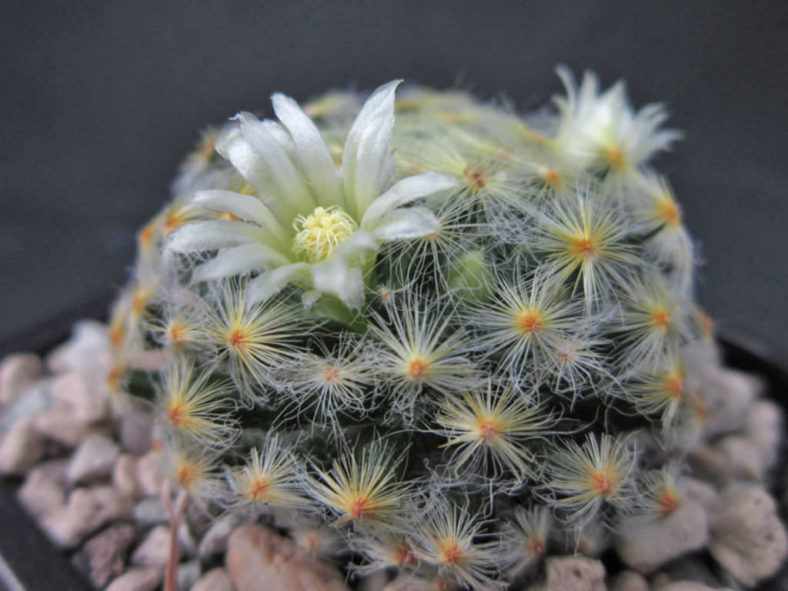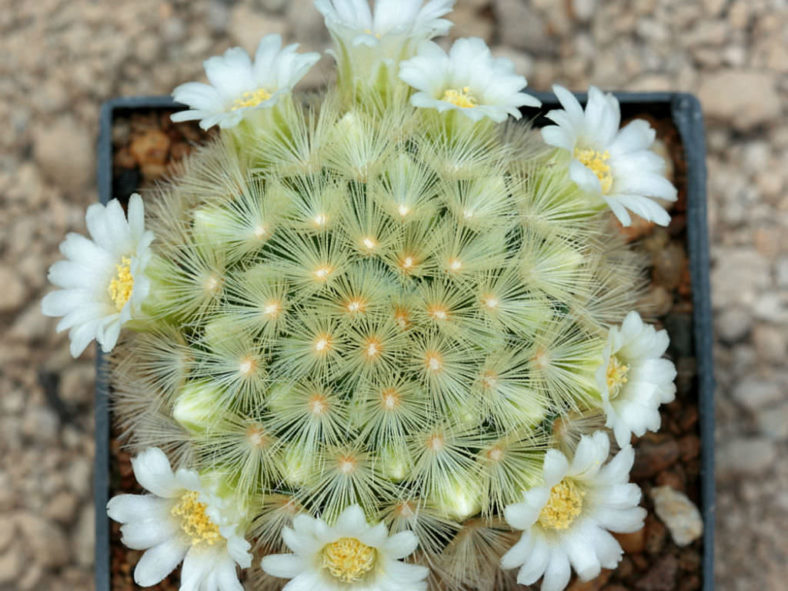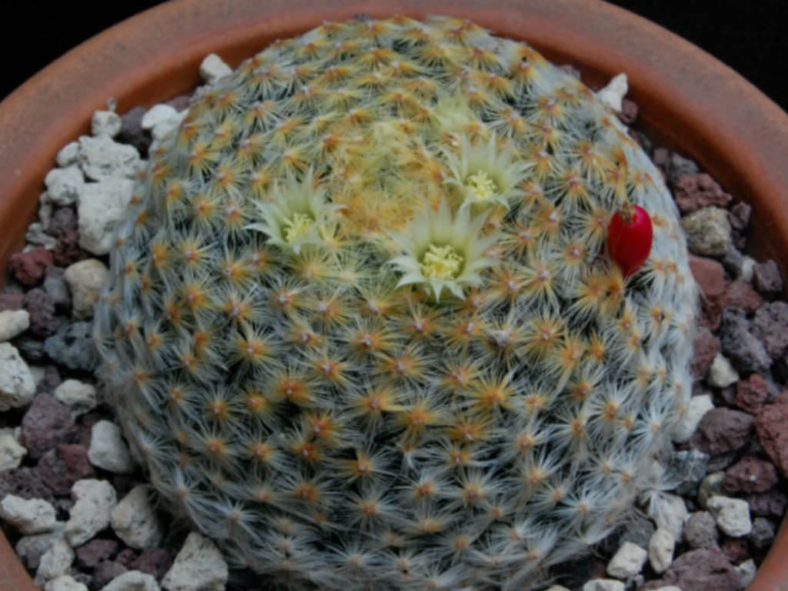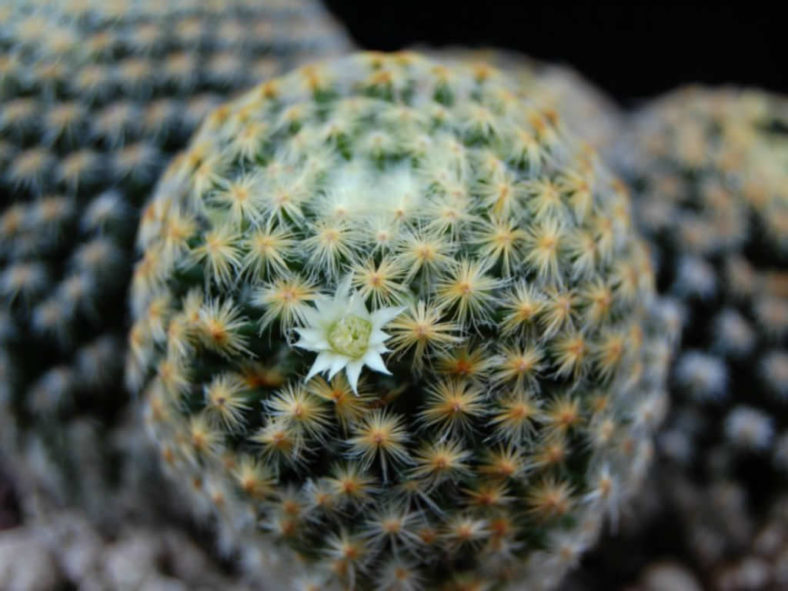Scientific Name
Mammillaria schiedeana Ehrenb. ex Schltdl.
Synonym(s)
Cactus schiedeanus, Chilita schiedeana, Ebnerella schiedeana, Escobariopsis schiedeana, Mammillaria schiedeana subsp. schiedeana, Neomammillaria schiedeana
Scientific Classification
Family: Cactaceae
Subfamily: Cactoideae
Tribe: Cacteae
Subtribe: Cactinae
Genus: Mammillaria
Origin
Mammillaria schiedeana is native to Mexico Tamaulipas, San Luis Potosí, Guanajuato, Querétaro, and Hidalgo). It grows in rocky areas, such as limestone cliffs and slopes, at elevations ranging from 3,610 to 5,250 feet (1,100 to 1,600 m).
Description
Mammillaria schiedeana is an attractive, small cactus with dark green, spherical stems with cylindrical or slightly tapering tubercles tipped with clusters of white, hairy spines with a yellowish base. The stems slowly grow solitary or in dense clumps and can reach up to 2.4 inches (6 cm) in diameter. Each areole bears up to 120 thin radial spines and 6 to 10 little, stouter central spines. The spines can grow up to 0.2 inches (0.5 cm) long.
The white to cream-colored flowers appear in winter, forming rings at the top of the stems in winter. They can grow up to 0.6 inches (1.5 cm) long. The fruits are red, club-shaped, and contain black seeds.

Hardiness
USDA hardiness zone 10b to 11b: from 35 °F (+1.7 °C) to 50 °F (+10 °C).
How to Grow and Care
To encourage better flowering, allow the plants to enjoy a cooling period in the winter and suspend watering. Unlike many other cacti, which use their ribs as storage devices, the Mammillaria feature raised tubercles, from which spines emerge. When you water, the tubercles expand to allow for increased water storage. The flowers emerge from the axils of these tubercles on the previous year's growth, which accounts for their interesting halo effect. The cactus mustn't be exposed to prolonged dampness and sitting water. Never let your cactus sit in a dish of water. Lastly, ensure fertilizer during the growing season for the best results.
Repot as needed, preferably during the warm season. To repot a cactus, ensure the soil is dry before repotting, then gently remove the pot. Next, remove the old soil from the roots, removing any rotted or dead roots.
See more at How to Grow and Care for Mammillaria.
Links
- Back to genus Mammillaria
- Succupedia: Browse succulents by Scientific Name, Common Name, Genus, Family, USDA Hardiness Zone, Origin, or cacti by Genus
Photo Gallery
Click on a photo to see a larger version.



